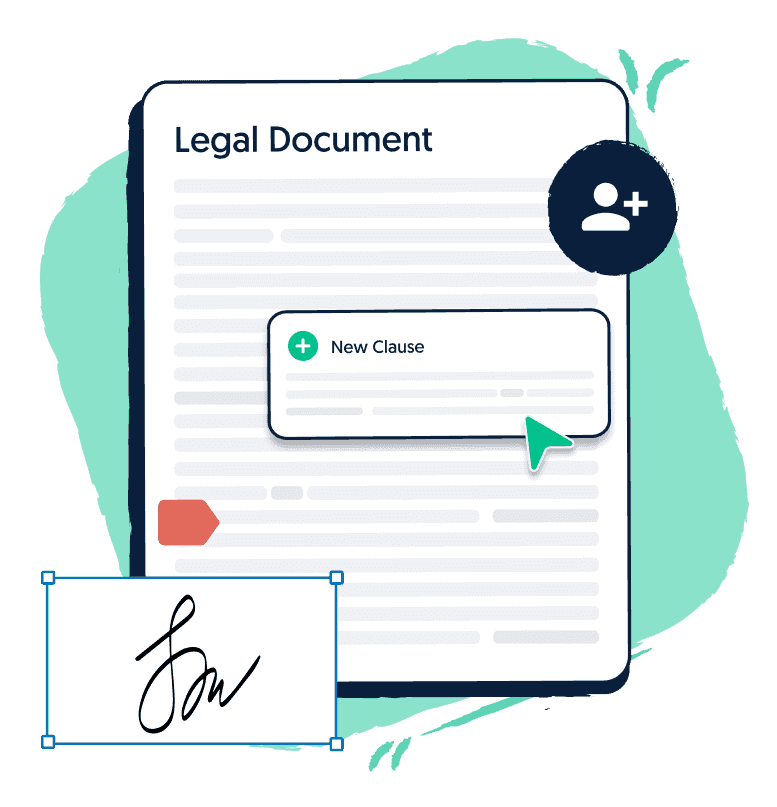Sydney-based lawyer. Formerly Legal Content Writer at Lawpath.
As a business, giving back to the people that make your business great with long service leave is essential. Especially when they have been with your organisation for an extended period of time. It’s a powerful way to show your appreciation and let them know how much you value them!
And what better way then long service leave—a national workplace entitlement that allows long serving employees to really ‘take a break’.
In our updated ultimate guide we’ll help you understand your employee’s long service leave entitlements and cover everything you need to know to ensure your employees are taken care of.
What is Long Service Leave in Australia?
Long service leave is a paid leave that acts as a reward for an employee’s dedication to your business and an extended period of service. Employees become eligible once they have been with a company for a specified period of time which differs from state to state.
After a long period of working for the same employer, an employee’s entitlement to long service leave comes from the relevant laws in each state or territory and the national employment standards outlined in the Fair Work Act 2009.
Similarly, if there are any issues regarding workplace relations and modern awards, the Fair Work Ombudsman acts as an independent statutory agent that can provide free advice and information when necessary.
Long service leave is completely different from your standard annual leave. An employee will only be able to access this type of leave after a number of years of continuous employment. Due to this, entitlements tend to be longer than annual leave entitlements.
Each state’s legislation sets out the period of employment necessary for the period of leave to be granted.
Similarly, each state has an agency that deals with long service leave entitlements.
- WorkSafe ACT
- NSW Industrial Relations
- NT Government
- Queensland Industrial Relations
- SafeWork SA
- WorkSafe Tasmania
- Wage Inspectorate Victoria
- WA Department of Mines, Industry Regulation and Safety

Get a free legal document when you sign up to Lawpath
Sign up for one of our legal plans or get started for free today.
Who qualifies for a Long Service Leave?
Employees can qualify if they are full time employees, part time employees or casual employees and have worked for the same employer for an extended period of time which tends to be between 7-10 years depending on the state. The specific period of absence differs from state to state and will be discussed below.
How is Long Service Leave calculated?
Payments are in relation to an ordinary time rate of pay. The rate of pay is based on one of the following:
- An employee’s ordinary pay the day prior to leave
- An employee’s average weekly pay during the previous 5-year period prior to leave. This excludes any unpaid leave.
- For casual employees, the normal weekly number of hours is calculated based on their past 12 months or 5-year average of hours worked.
Where ordinary time rate of pay does not quite apply, for example, commission-only workers, long service leave is based on their average weekly pay for the previous 12 months or 5-year period. When considering employees undertaking shift work, penalty rate and overtime pay are not included in the calculation.
Moreover, when calculating the payment, only weeks worked by an employee can be included. This means any unpaid absences, such as parental leave or unpaid sick leave should not be included in the calculation.
If you’re looking for quick calculations we recommend using the long service leave calculator.
What about bonuses?
Bonuses and commissions received by an employee are averaged over the previous 12 months or 5 years and to be included in their long service leave pay. These amounts are to be added to the weekly rate used to establish the leave payment.
However, bonuses and commissions paid to employees who are otherwise paid in excess of $162,000 annually are not included.
Long Service Leave in the Australian States
New South Wales
In NSW, long service leave is governed by the Long Service Leave Act 1955 (NSW). The key provisions for NSW long service leave outline that:
- An employee with the same employer for 10 years is entitled to 2 months or 8.67 weeks of paid leave.
- After 10 years, an employee is entitled to an additional month or 4.33 weeks of service leave for every additional 5 years of service.
- If employment is terminated before 5 years of service then long service leave is not applicable.
- After 5 years of service, there are pro-rata entitlements that apply in the case of illness, incapacity, or domestic necessity.
Australian Capital Territory
The Long Service Act 1976 (ACT) outlines the long service leave entitlements in ACT. The key entitlements are as follows:
- An employee who completes a period of continuous service of at least 7 years is entitled to 6.0667 weeks of paid leave.
- When a public holiday or award holiday falls during long service leave, the period of long service leave is increased by one day for each public or award holiday.
- For each subsequent year of continuous service, the employee accrues a further 1/5 of a month of long service leave.
- After 5 years of service, there are pro-rata entitlements that apply in the case of illness, incapacity, or domestic necessity.
Northern Territory
Entitlements in the Northern Territory are governed by the Long Service Leave Act 1981 (NT).
- Employees are eligible for 13 weeks of long service leave after 10 years of continuous service.
- For every additional five years of service after the initial 10, employees are entitled to 6.5 weeks of long service leave.
- Public holidays that fall during the long service leave period do not extend the period of long service leave.
- After 5 years of service, there are pro-rata entitlements that apply in the case of illness, incapacity, or domestic necessity.
Queensland
Entitlements in Queensland are governed by the Industrial Relations Act 2016 (QLD).
- An employee with the same employer for 10 years is entitled to 2 months or 8.67 weeks of paid leave.
- After 10 years, an employee is entitled to an additional month or 4.33 weeks of service leave for the additional 5 years of service.
- If an employee is terminated after 10 years of service they are automatically entitled to be paid their long service leave.
- If an employee’s employment is terminated after 7 years of service they are entitled to payment if they can prove illness or incapacity, necessity, or unfair dismissal.
- Employees can opt to be paid out of their long service leave if they apply to the Industrial Court of Queensland.
South Australia
Entitlements in South Australia are covered under the Long Service Leave Act 1987 (SA).
- Employees are entitled to 13 weeks of long service leave after 10 years of continuous service.
- For every subsequent year, employees receive an additional 1.3 weeks of long service leave.
- Employees that have completed over 7 years of continuous service are entitled to pro rata long service leave.
- Public holidays that occur during the leave period do not extend long service leave.
- Employees who have over 10 years of service must be paid 13 weeks of long service leave and pro rata leave upon the termination of their employment contract.
Tasmania
Entitlements in Tasmania are covered under the Long Service Leave Act 1976 (TAS) and are largely the same as in NSW.
- An employee with the same employer for 10 years is entitled to 2 months or 8.67 weeks of paid leave.
- After 10 years, an employee is entitled to an additional month or 4.33 weeks of service leave for every additional 5 years of service.
- After 7 years of service, there are pro-rata entitlements that apply in the case of illness, incapacity, or domestic necessity.
Victoria
Entitlements in Victoria are governed by the Long Service Leave Act 2018 (VIC). The key provisions outline that:
- An employee who completes a period of continuous service of at least 7 years is entitled to long service leave.
- The amount of leave granted is to be calculated by the total number of weeks of employment divided by 60. It is then multiplied by the weekly rate of pay.
- To determine how much long service leave is available the Business Victoria Leave Calculator can come in handy.
- If an employee’s employment ends for any reason after seven years of service, this could mean redundancy, their long service leave is to be paid out on a pro-rata basis.
Western Australia
The Long Service Leave Act 1958 (WA) sets out the key provisions for entitlements in Western Australia. Long service leave in WA outlines that:
- An employee with the same employer for 10 years is entitled to 2 months or 8.67 weeks of paid leave.
- After 10 years, an employee is entitled to an additional month or 4.33 weeks of service leave for every additional 5 years of service.
- Public holidays that occur during the leave period do not count towards long service leave.
- Regardless of how an employee’s contract is terminated, leave is to be paid out if they have over 10 years of continuous service.
- After 7 years of service, there are pro-rata entitlements that can be claimed. There is an exception if termination is due to serious or wilful misconduct.
What is Portable Long Service Leave?
While it is easy to confuse long service leave and portable long service leave as they are quite similar, there are a few key differences that you should be aware of.
Portable long service leave operates on its own, meaning that an individual would be unable to claim both normal and portable long service leave.
In NSW, an individual can claim portable long service leave when they have been employed within a specific industry for over 10 years. This means that the scope is much greater.
Portable long service leave allows these employees to take their accrued service to an industry with them as they move from job to job. Therefore, their entitlement is quite literally portable. So long as their new employer is within the same industry, their long service leave entitlements would continue to accrue. The accrual of their time becomes payable after 10 years in an industry regardless of a new owner or employer.
Who is eligible for Portable Long Service Leave?
It is important to note that the entitlements may differ from state to state, however, portable entitlements can apply to most workers in the following industries:
- Construction Industry and Building Industry.
- Security and Community Services Industry in Victoria.
- Cleaning Services Industry.
- Coal Mining Industry.
Long Service Leave FAQs
Can an employee get long service leave if they have two jobs?
Yes, it is possible that an employee can receive long service leave for one of their jobs and continue to work their other job in the meantime.
Can an employee get another job whilst on long service leave?
This depends on the state you live and work in. In the Northern Territory, South Australia, and Victoria this is strictly forbidden.
However, NSW, Queensland, and the ACT’s long service leave and workplace legislation do not specifically deal with the issue. As a result, it is really dependent on the contractual terms of your employment and the secondary job you are seeking to obtain.
Can an employee get long service leave if they resign?
If an employee has worked for you for over the required period, for example, 10 years and then they are dismissed, resign, or made redundant, you should pay any long service leave that has not been taken.
Is there a long service leave entitlement for less than ten years of service?
In NSW, an employee who has completed less than 10 but more than 5 years of service at one business may be entitled to a long service pro-rata payment if they:
- resign as a result of illness, incapacity, domestic or other pressing necessity; or
- are dismissed for any reason except serious and wilful misconduct; or
- Die.
If long service leave is taken at 10 years, how long does a worker have to wait to take more long service leave?
When an employee has worked over 15 years, they will be entitled to an additional month on long service leave.
Can an employee be paid their long service leave instead of taking the leave?
No, leave must be taken.
Payment of leave as remuneration can only occur upon termination of employment.
Does parental leave affect long service leave?
Given long service leave is for continuous service, any period of unpaid parental leave does not break the chain of service for an employer. However, the parental leave or carer’s leave cannot count towards the length of the worker’s continuous service. This means an additional period would need to be worked to make up for the unpaid leave taken.
Key Takeaways
As an employer, it is important to keep up to date with the discussed requirements so you can reward an employee’s dedication.
Any employee can qualify for long service leave if they have worked for you for an extended period of time. The period of time needed differs from state to state and different pieces of legislation will apply.
To easily cover all your bases within a contract of employment, Lawpath’s long service leave policy can be used to clarify the entitlements for both you and your employee.

Get a fixed-fee quote from Australia's largest lawyer marketplace.






